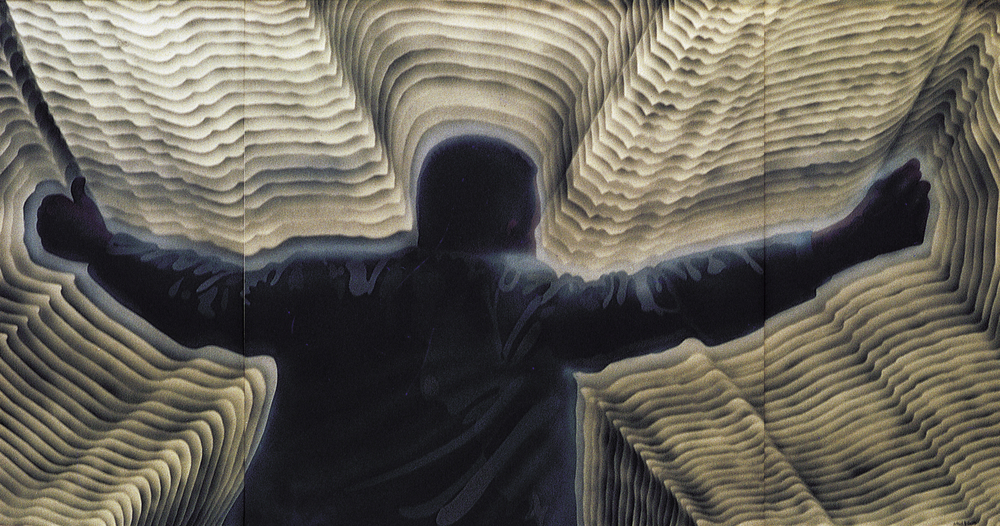Igualitat per a tothom (Equality for everyone)
The artist’s commitment shows a more optimistic side in this work. Demands for racial equality — such as those made by Martin Luther King — are a big influence on Antoni Miró. In this work, the artist uses King to convey a broader, less specific message, which is none other than the need to get rid of the inequalities affecting many minorities around the world, especially those affecting his own environment. This was the central theme of Miró’s ‘Black America’ series.
The work is a triptych, with a squarelike central part and two sides attached to it, each being half the size of the main part. This tripartite division is not accidental for the three key elements, the head and the two hands, occupy each of the areas. Thought is a central theme but the importance of action is also acknowledged. In addition, as Bengoechea put it, the arms themselves “appear to physically push” the sides of the triptych, boosting the painting’s impact.”
The scene is illustrated with a narrow colour range — mainly greys. It is a cry of encouragement addressed to a crowd yearning for freedom and is captured from behind. Again, as in the reuse of images from the press world — which is typical of the crónica de la realidad (Chronicle of Reality) movement — the viewpoint adopted is one that a priori lies outside the classical canon of painting. The artist deliberately transforms the intentional meaning of the original image by omitting the crowd.
The figure, represented with a realism that emulates the print media of the journalism of the time, radiates an energy that is conveyed by air-brushed waves rippling out from it. Its contour multiplies itself spreading beyond the bounds of the canvas, stretching out to infinity. Bengoechea states that the protagonist’s gesture signified “Man’s advance to higher planes”.
The contrast between the character’s representation and that of his repeated auras is shaped by several variables. On the one hand, there is the figuration defining the protagonist. On the other, abstract devices are used to convey the strength of King’s ideas. There is also a strong contrast between the darkness and chromatic density of the character’s image and the evanescence of the gradients of the repeated, expanding contours throughout the rest of the picture. Here, the transition between the figure and the background is an essential feature of the work. A darker initial strip mediates between the main figure and the ambience created.
One can clearly see the influence of Op Art, which had been very popular in the previous decade, in the creation of an illusion of movement conveyed by the continuous juxtaposition of winding lines. It is a clear example of the vibratory “disintegration” mentioned by Corredor, who had stated earlier how the effect was achieved through “the unfolding of the figures and their surrounding vibrations.”
Santiago Pastor Vila
